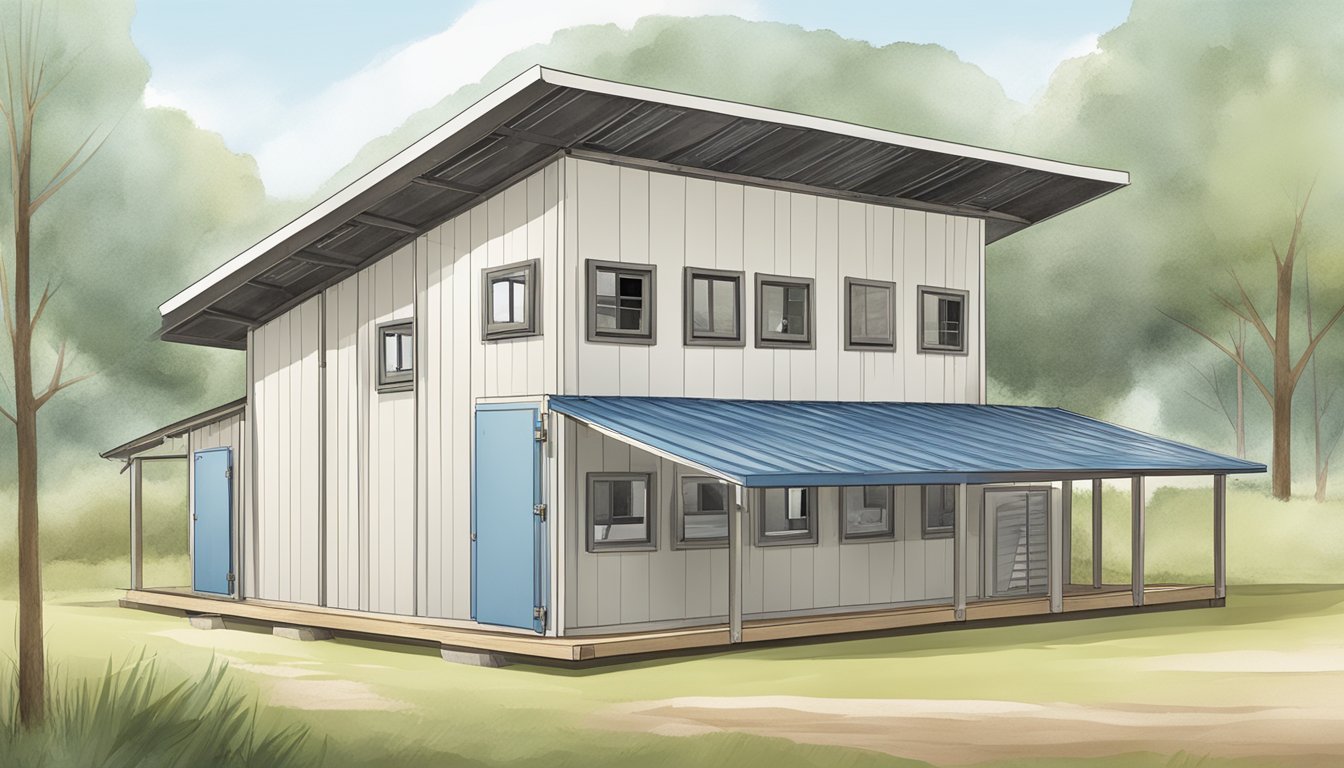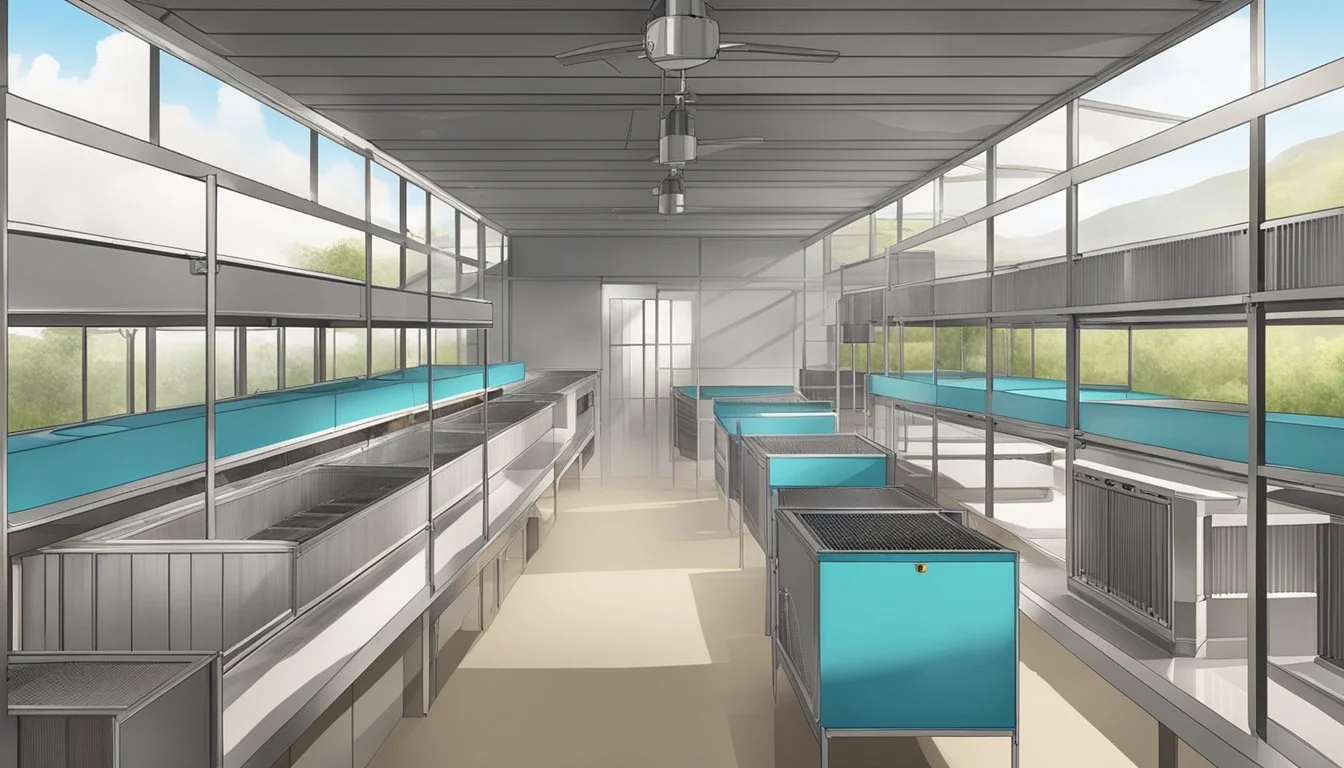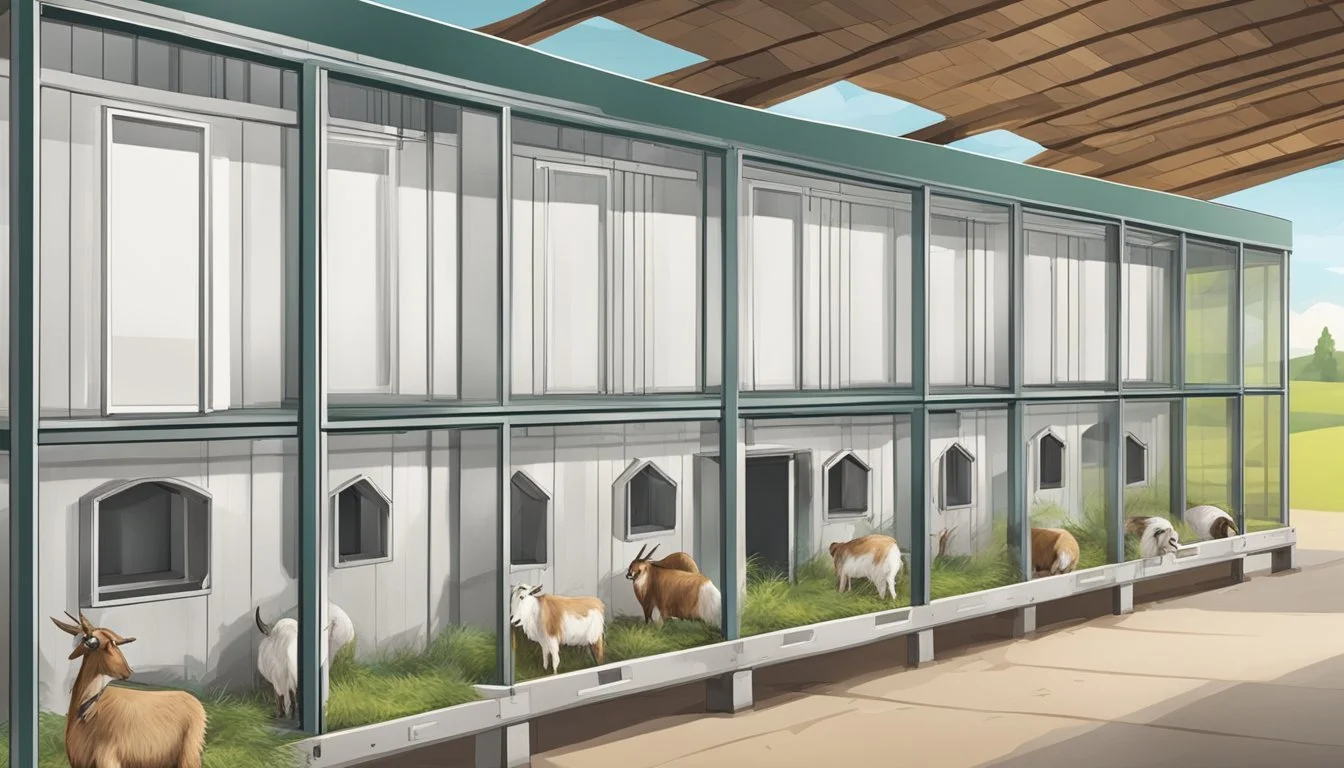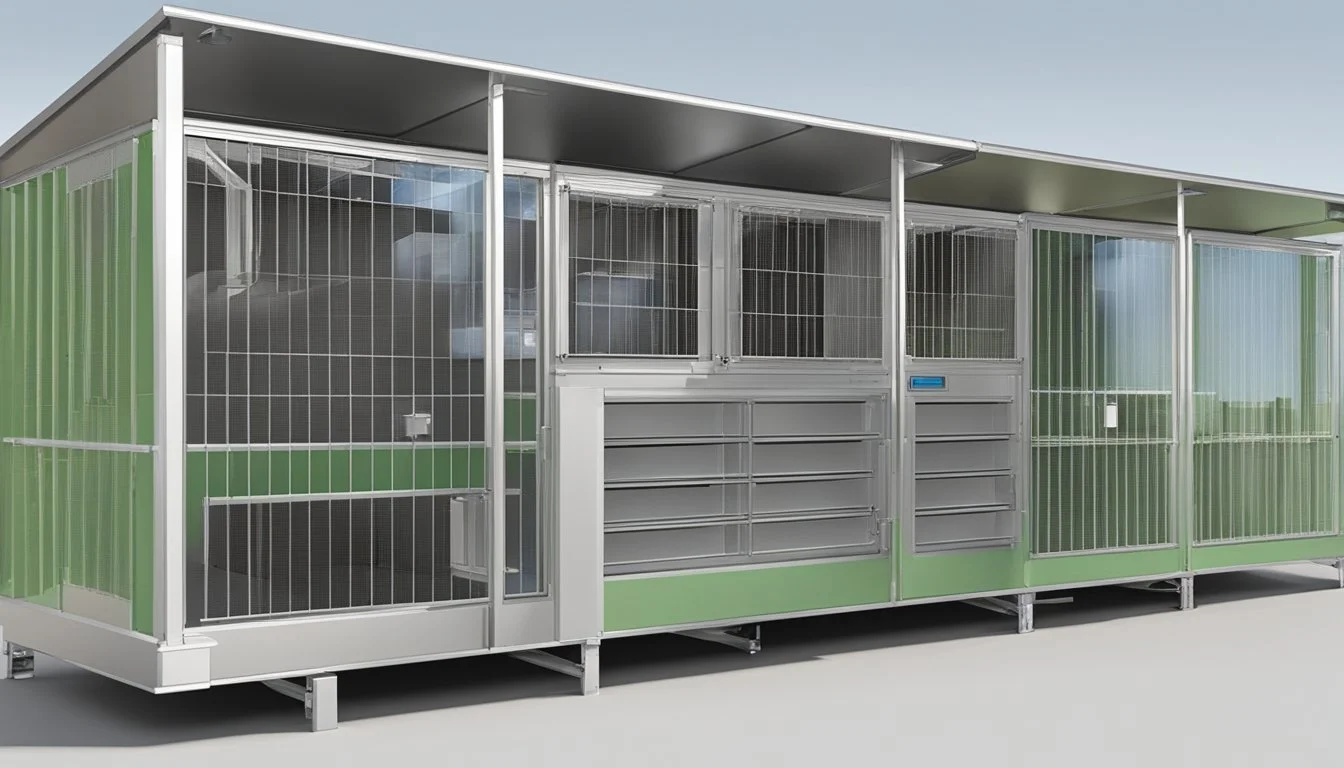How do I ensure proper ventilation in my goat housing?
Key strategies for a healthy environment
Ensuring proper ventilation in goat housing is crucial for maintaining the health and wellness of the herd. Ventilation plays a significant role in removing excess moisture, ammonia, and other harmful gases, as well as providing fresh air to the goats. It is a key component of the overall environmental control system within the housing structure. While the need for proper air exchange rates is universally acknowledged, the best approach to ventilation can vary depending on the specific design of the goat housing and the local climate.
Goat owners must assess the ventilation needs of their facilities, taking into account the number of animals and the size of the housing. Providing a steady flow of air without causing drafts that could stress the animals is a delicate balance. It is important to monitor the signs that indicate insufficient ventilation, such as condensation, strong odors, and respiratory issues among the goats. Collaborating with a veterinarian can help determine if the issues are ventilation-related.
Adjusting the goat housing design for optimized airflow involves various strategies, including natural ventilation from windows and vents, as well as mechanical systems like fans. Selecting the suitable type of ventilation system, such as positive pressure or negative pressure setups, requires a thorough understanding of their operation and how they will fit within the given infrastructure. Whether renovating an existing structure or designing new housing, the goal is to create an environment that supports the goat's health and productivity by incorporating effective and proper ventilation.
Understanding the Basics of Goat Housing
Proper goat housing is instrumental for the welfare and productivity of the herd, addressing factors such as health, temperature regulation, and protection. This section will guide you through the key components related to ensuring an optimal living environment for your goats.
Significance of Proper Ventilation
Ventilation is critical in goat housing to maintain air quality and control temperature and humidity. Good ventilation helps to prevent respiratory diseases and promotes a dry and comfortable shelter. In a well-ventilated housing system, harmful gases like ammonia that can build up from manure are effectively removed, which is essential for the overall health of the goats.
Choosing the Right Location
The ideal location for goat housing should provide natural air flow and protection from extreme weather. The shelter should face away from prevailing winds while allowing enough light and ventilation. It is important to select a site that doesn't accumulate water, ensuring that goats stay dry and reducing the risk of hoof problems and other health issues.
Determining the Appropriate Size
The size of the housing must correlate with the number of goats to prevent overcrowding and promote better air circulation. As a general guideline, each adult goat requires about 1.5 to 2 square meters, while kids need approximately 1 square meter. Proper bedding, such as dry straw or wood shavings, is also necessary for insulation and absorbing moisture, which aids in temperature control and protection against the cold.
Designing the Ventilation System
Proper ventilation is critical in maintaining the health and comfort of dairy goats. It involves a combination of elements ranging from the type of ventilation system used to strategic placement of windows.
Types of Ventilation Systems
There are two primary ventilation systems in dairy goat housing: natural ventilation and mechanical ventilation. Natural ventilation harnesses wind and thermal buoyancy to circulate air, which can be effective if designed correctly. Mechanical ventilation, on the other hand, uses fans and other devices to control the environment. This method can be more reliable but also incurs higher initial setup and operational costs.
Positioning Windows for Optimal Airflow
Windows play a crucial role in both natural and mechanical ventilation systems as they allow for the entry of fresh air and sunlight, which are essential for a dry and pathogen-free environment. Windows should be positioned on opposing walls to facilitate cross-ventilation, ensuring that stale air can be replaced by fresh air efficiently.
Sun-facing windows: Capture warmth during colder months.
Shade-providing extensions: Reduce overheating and exposure during hot weather.
Adjustable windows: Allow for greater control over airflow depending on weather conditions.
Maintaining Air Quality
Maintaining high air quality within goat housing requires attention to:
Insulation: Proper insulation helps maintain temperature and reduces condensation, which can affect air quality.
Drainge: Effective drainage systems prevent the buildup of moisture and ammonia, which can lead to respiratory issues in goats.
Regular monitoring: Air quality should be monitored regularly to adjust ventilation as needed, ensuring that dust, pathogens, and moisture are kept at minimum levels.
By incorporating these specific strategies into the ventilation system design, one can achieve a controlled environment that promotes the wellbeing of dairy goats.
Protecting Goats from Environmental Factors
Providing goats with a secure environment is essential to shield them from the adverse effects of rain, humidity, and varying weather, including extreme conditions. Implementing robust shelter solutions and moisture control methods are crucial steps in maintaining their well-being.
Sheltering from Extreme Weather
To safeguard goats from extreme weather conditions, it's important to construct a sturdy shelter that can withstand various weather events. A solid, four-sided structure protects the herd from strong winds and heavy rainfall. During winter months, insulation is key to retaining heat and keeping the internal atmosphere warm for the goats. Access to indoor living spaces that shield them from harsh elements is a crucial component of any good goat housing plan.
Keeping the Housing Dry and Warm
Ensuring the goat housing remains dry and warm is particularly important in preventing health issues such as respiratory infections. Moisture control is achieved by installing adequate drainage systems to divert rainwater away from the housing. Additionally, the use of elevated floors or proper bedding materials, such as straw, can absorb moisture and manure, further contributing to dry conditions. To avoid the risks associated with drafty environments, housing should be designed to minimize drafts while still allowing for proper ventilation.
Enhancing Goat Health and Productivity
To optimize goat health and productivity, maintaining a well-ventilated environment that supports robust feeding and exercise regimes is essential. Ensuring cleanliness and sanitation within these areas further underpins the wellbeing of the herd.
Managing Feeding and Exercise Areas
Feeding Areas: Goats require a balanced diet with a foundation of quality hay, which is critical for their digestive health and milk production. The feeding area should be kept dry and free from contaminants to prevent the growth of harmful organisms that could lead to respiratory issues or parasites. Regular maintenance of feeding troughs and storage spaces is crucial to prevent spoilage and waste.
Water Access: Provide multiple clean water sources to encourage hydration, support metabolism, and aid in digestion.
Exercise Areas: Adequate space for movement is pivotal for the growth and development of young goats. Sufficient exercise ensures robust growth and strong milk-producing goats. Enclosures should allow goats to move freely, promoting healthy weight and muscle tone which will, in turn, reduce the risk of health complications.
Ensuring Cleanliness and Sanitation
Shelter Cleanliness: A clean living area prevents the spread of disease and parasites, both of which can significantly impact the health and productivity of goats. Regular removal of waste and soiled bedding, coupled with disinfection processes, contributes to a hygienic environment.
Sanitation Practices: Establish a routine cleaning schedule and adhere to it strictly. Use appropriate cleaning agents that are effective but safe for the goats, and ensure that the housing is completely dry before allowing the goats back in to prevent moisture-related health issues.
By concentrating on strategic management of feeding and exercising spaces and prioritizing cleanliness and sanitation, goat health and productivity can be significantly enhanced. This leads to better growth rates, higher quality milk production, and overall improved livestock wellbeing.
Security and Protection Measures
Proper ventilation in goat housing includes ensuring the safety of the herd from external threats. Addressing security and protection measures is key to preventing predator invasions and maintaining the structural integrity that upholds the ventilation system.
Safeguarding Against Predators
Goat housing must be designed to protect against common predators such as coyotes. They recommend using electric fences to deter these and other predators effectively. An electric fence should have multiple strands at varying heights, taking into consideration the size and agility of potential predators. Alternatively, woven wire fences are also effective, extending below the ground level to prevent digging animals from gaining access.
Structural Integrity and Maintenance
The maintenance of the goat housing's structural integrity is crucial for both ventilation and protection. Regular inspections can ensure that areas needing repair are addressed promptly. Any gaps or weak points where predators could enter should be reinforced. Materials used in the construction must be of high quality to withstand environmental pressures thereby ensuring longevity and continuous protection.
Considering Special Requirements
Proper ventilation is crucial for maintaining the health and productivity of dairy goats. It is important to consider the different categories of goats within a herd and any specific needs they may have as this will affect their housing and ventilation requirements.
Accommodating Different Goat Categories
When it comes to kidding, the needs of does and their kids take precedence. They require a well-ventilated, clean environment that is free from drafts to ensure the kids' survival and growth. For the milking herd, particularly in dairy goat housing, ventilation must allow for the constant renewal of air without creating cold drafts around the milking area. This is essential to maintain milk production and prevent mastitis. Bucks, on the other hand, require separate buck housing to control odors and ensure the overall cleanliness of the dairy operation.
Specific breeds like Nigerian dwarf goats may have different spatial requirements due to their smaller size, but the ventilation principles remain the same: fresh air must be accessible to all goats to regulate the internal temperature and reduce moisture and ammonia build-up, which are detrimental to health.
Incorporating Features for Specific Needs
Incorporating features aimed at promoting vitamin D synthesis is necessary for the wellbeing of goats. This might involve the design of windows or translucent panels that allow natural sunlight to permeate the facility. Meanwhile, the milking area should be equipped with mechanisms to ensure high air quality, as contamination can affect both the goats and the milk they produce.
To cater to these needs without compromising the herd's health, the dairy goat housing should implement adjustable ventilation systems that can adapt to the changing outdoor weather conditions and the goats' lifecycle stages, ensuring optimum conditions year-round.
Management and Maintenance of Goat Housing
Effective goat housing management requires attentive maintenance to ensure the wellbeing of the goats and the efficiency of farm operations. A stringent schedule for cleaning and updating the housing structure plays a pivotal role in controlling ammonia levels and supporting overall goat health.
Regular Cleaning and Manure Management
Regular cleaning is essential to maintain a hygienic environment for goats and includes removing soiled bedding to control ammonia levels. Manure management should be systematic, with manure being collected and either composted or directly used as fertilizer in fields. This not only contributes to waste reduction but also recycles valuable nutrients back to the soil.
Daily: Remove wet spots and waste materials.
Weekly: Conduct thorough cleaning of all surfaces.
Seasonal: Replace or refresh bedding materials generously.
As needed: Check for and repair any damage to housing structures to prevent escapes or injury.
Seasonal Adjustments and Upgrades
Adjusting goat housing with the seasons ensures comfort and good health through changes in temperature and weather. Implement energy-efficient solutions for heating and cooling, which can conserve resources and cut costs. Upgrades might be necessary to accommodate herd expansion or improve overall functionality and health care practices.
Summer: Install fans, open windows, or consider removable panels to increase airflow.
Winter: Insulate walls and consider warm bedding additions for goats.
Year-round: Ensure there is sufficient space for forage and grain, and provide easy access to water and minerals.
Periodic: Consult with a veterinarian to adapt housing conditions that support the herd's health, such as quarantine areas for sick animals.
Proper management and regular maintenance are the backbone of successful goat housing, balancing the needs for a clean, comfortable environment with the practicalities of agricultural operations.
Innovative Approaches and Additional Resources
Ensuring proper ventilation in goat housing not only impacts the well-being of the goats but also the overall maintenance of the facility. Innovative approaches can be tailored to specific needs, and additional resources provide valuable expertise and design options.
Implementing DIY Solutions
One can tap into the realm of DIY goat housing solutions, which often involve creating cost-effective, ventilated shelters. A popular DIY approach is the construction of a three-sided shelter that allows for natural airflow while providing protection against weather elements. Bamboo is an ideal material for such projects due to its natural ventilation properties and sustainability. However, one must consider the disadvantages such as the longevity and sturdiness of the material in different climates. Here are some tips for DIY enthusiasts:
Design shelters so that the open side faces away from prevailing winds.
Utilize additional features like adjustable windows or vents for better air regulation.
Leveraging Cooperative Extension Knowledge
The Cooperative Extension is a valuable resource that provides research-based knowledge on livestock housing. They often share resources on effective ventilation systems, incorporating both natural and mechanical methods. By leveraging this knowledge, one can optimize goat housing to ensure animal health and farm productivity. The advantages of using Cooperative Extension's guidance include accessibility to expert advice and staying updated with the latest agricultural practices. They might also provide insights into the locality-specific best practices for goat housing ventilation.








